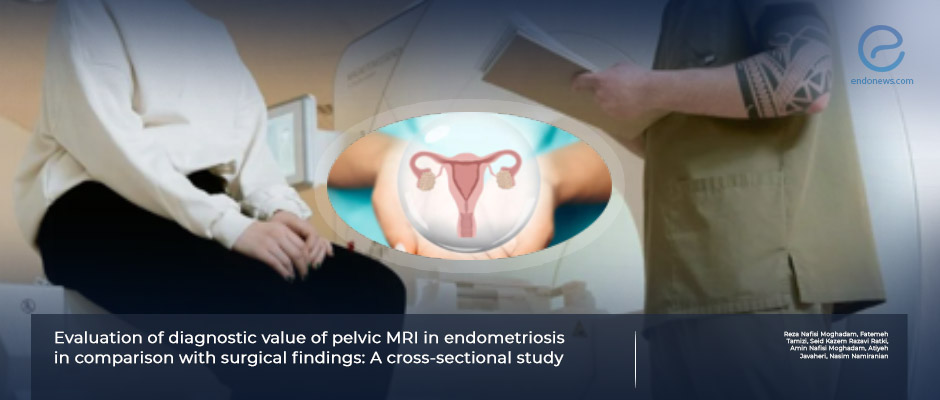MRI Improves Deep Infiltrating Endometriosis Diagnosis
May 16, 2024
Laparoscopy is still the gold standard for the diagnosis of endometriosis, but MRI can also help.
Key Points
Highlights:
- MRI with susceptibility-weighted imaging sequence is the best non-invasive diagnostic method for endometriosis.
- Laparoscopy is still the gold standard for the diagnosis of endometriosis.
Importance:
- MRI can detect the presence of deep infiltrating endometriosis.
What’s done here:
- Researchers compared the accuracy of pelvic MRI and laparoscopy for diagnosing deep infiltrating endometriosis.
Key results:
- The sensitivity and specificity of pelvic MRI are 94.8% and 20% respectively.
- The positive and negative predictive value of pelvic MRI are 90.2% and 33.3%.
Limitations:
More research is needed on more patients to validate these findings.
Lay Summary
Magnetic resonance imaging (MRI) with susceptibility-weighted imaging sequence is the best method of non-invasively diagnosing endometriosis, according to a new study published in the International Journal of Reproductive BioMedicine. However, the authors noted, “Laparoscopy is still the gold standard of endometriosis diagnosis”.
To compare the accuracy of pelvic MRI in diagnosing deep infiltrating endometriosis (DIE) to that of laparoscopy, a team of researchers from Iran led by Dr. Nasim Namiranian of the Diabetes Research Center at Shahid Sadoughi University of Medical Sciences in Yazd conducted a cross-sectional study in 40 women who were suspected of having endometriosis.
The women all underwent pelvic MRI as well as diagnostic laparoscopy.
The researchers reported that the sensitivity of the MRI for pelvic endometriosis was 94.8% while its specificity was 20%.
The positive predictive value of the MRI was 90.2% while its negative predictive value was 33.3%.
“MRI can be used as an efficient method for detecting deeply infiltrating lesions,” the researchers wrote. “It is recommended that similar feature studies are conducted on larger samples and the use of [susceptibility weighted imaging] sequences in MRI imaging.”
Research Source: https://pubmed.ncbi.nlm.nih.gov/38544666/
deep infiltrating endometriosis diagnosis magnetic resonance imaging MRI laparoscopy

